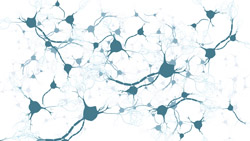Mechanisms underlying hereditary spastic paraplegias
Hereditary spastic paraplegias (HSPs) are a group of neurological disorders characterised by progressive stiffness and contraction of lower extremities due to nerve dysfunction. Research into the mechanism of HSPs has identified NIPA1/SPG6, a membrane-associated protein that works antagonistically with bone morphogenetic protein (BMP) signalling. This affects the cytoskeleton of motor-neuron axons and, in turn, hampers axonal transport and neurotransmitter release, causing neurons to dysfunction. BMPs have a known regulatory function in many cellular processes. To study the mechanisms behind HSPs, the EU-funded HSP Axons Drosophila project investigated the role of BMP signalling using Drosophila as a model organism. By working on mutated BMP Drosophila larvae, scientists were able to find associations of various components of the pathway with irregular accumulation of synaptic vesicles along motor-neuron axons. Additionally, project researchers studied the involvement of BMP signalling in regulating the synapses of neurons with muscle, known as neuromuscular junctions. They found that Sara protein (Smad anchor for receptor) affected the neuronal response to BMP signalling and that it was involved in growth regulation in some motor-neurons. These results indicated that Sara protein could act as a positive regulator of neuromuscular junction growth and may be implicated in the causative mechanism behind HSPs. The findings of the HSP Axons Drosophila project provided new evidence for the role of BMP signalling in HSPs. This information is expected to have direct consequences for the development of novel therapeutic strategies to tackle neurological disorders.







